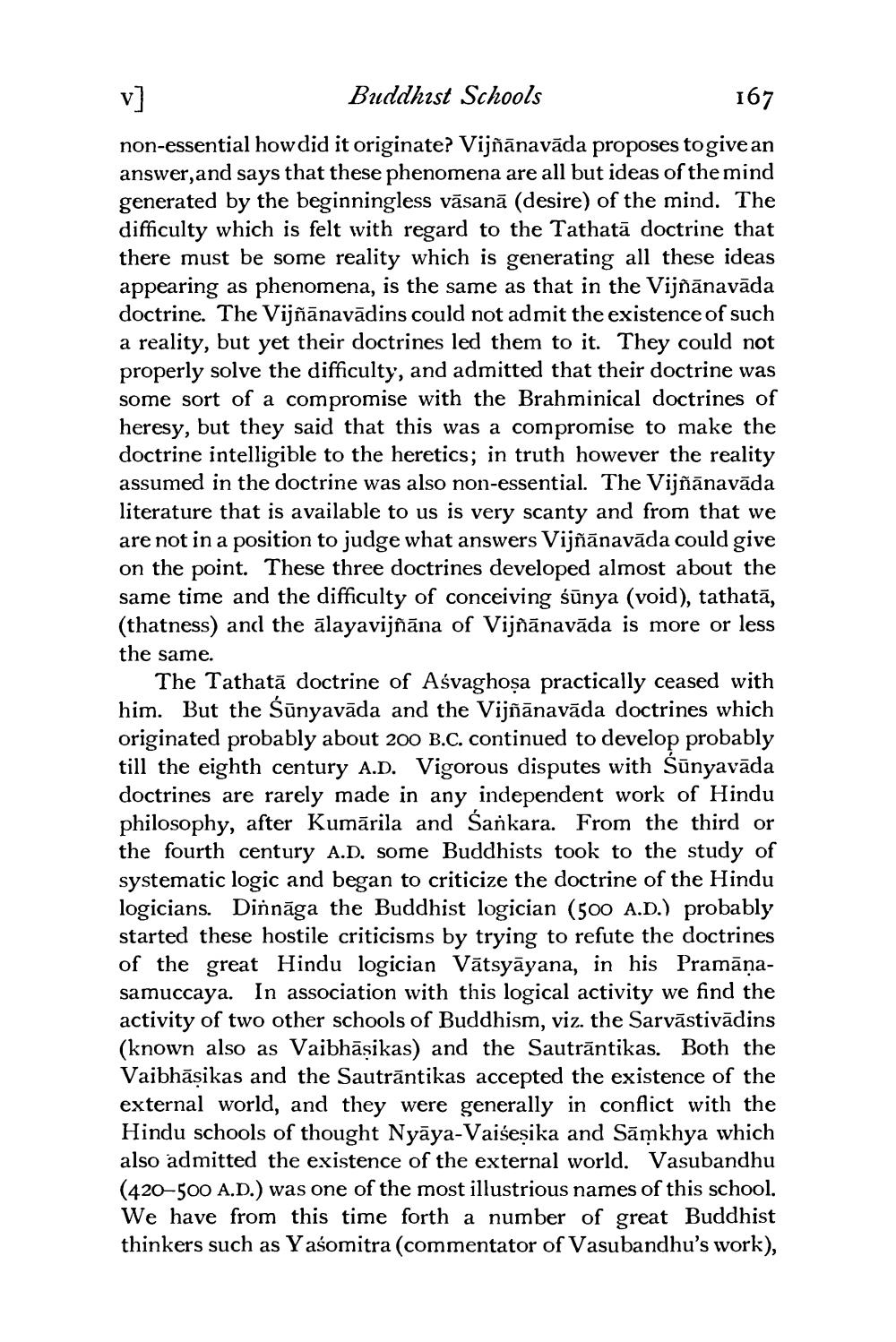________________
Buddhist Schools
167
non-essential how did it originate? Vijñānavāda proposes to give an answer, and says that these phenomena are all but ideas of the mind generated by the beginningless vāsanā (desire) of the mind. The difficulty which is felt with regard to the Tathatā doctrine that there must be some reality which is generating all these ideas appearing as phenomena, is the same as that in the Vijñānavāda doctrine. The Vijñānavādins could not admit the existence of such a reality, but yet their doctrines led them to it. They could not properly solve the difficulty, and admitted that their doctrine was some sort of a compromise with the Brahminical doctrines of heresy, but they said that this was a compromise to make the doctrine intelligible to the heretics; in truth however the reality assumed in the doctrine was also non-essential. The Vijñānavāda literature that is available to us is very scanty and from that we are not in a position to judge what answers Vijñānavāda could give on the point. These three doctrines developed almost about the same time and the difficulty of conceiving śūnya (void), tathatā, (thatness) and the alayavijñāna of Vijñānavāda is more or less the same.
The Tathatā doctrine of Aśvaghoṣa practically ceased with him. But the Śūnyavāda and the Vijñānavāda doctrines which originated probably about 200 B.C. continued to develop probably till the eighth century A.D. Vigorous disputes with Sūnyavāda doctrines are rarely made in any independent work of Hindu philosophy, after Kumārila and Śankara. From the third or the fourth century A.D. some Buddhists took to the study of systematic logic and began to criticize the doctrine of the Hindu logicians. Dinnāga the Buddhist logician (500 A.D.) probably started these hostile criticisms by trying to refute the doctrines of the great Hindu logician Vātsyāyana, in his Pramāņasamuccaya. In association with this logical activity we find the activity of two other schools of Buddhism, viz. the Sarvāstivādins (known also as Vaibhāsikas) and the Sautrāntikas. Both the Vaibhāsikas and the Sautrāntikas accepted the existence of the external world, and they were generally in conflict with the Hindu schools of thought Nyāya-Vaiseșika and Sāmkhya which also admitted the existence of the external world. Vasubandhu (420-500 A.D.) was one of the most illustrious names of this school. We have from this time forth a number of great Buddhist thinkers such as Yaśomitra (commentator of Vasubandhu's work),




